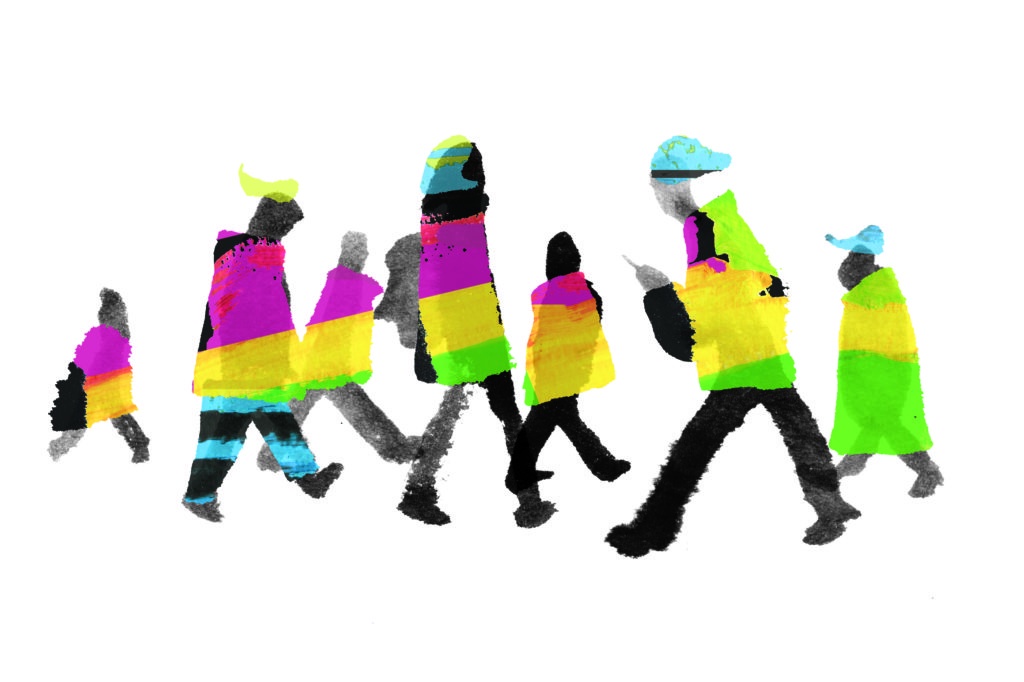In early February, a jpeg of a pixelated, pale, bandana-wearing alien sold for nearly $24 million dollars. Why? It is an NFT (non-fungible token) from a 10,000-strong collection of digital avatars called Crypto Punks, many of which are also priced in the millions. Each Punk has differing ‘unique’ attributes or traits, whose rarity affects the value: the alien trait, which appears only nine times, is the rarest and therefore the most expensive. To true believers, this alien represented a piece of crypto history and would thereby allow its owner to gain membership of an exclusive inner circle of NFT elite collectors.
Such collectors have also zeroed in on the Bored Ape Yacht Club (BAYC). This NFT collection has seen such buying momentum amongst celebrities that the floor price is now close to $500,000. These purchases are immediately put on ostentatious display as digital avatars within the all-important social media space, with Twitter in particular swiftly capitalising on the trend by allowing users to link their NFTs to their profile pictures.
To a crypto outsider, this is a sideshow of lunacy and breath-taking stupidity. How can such nonsense matter, and how can any digital image be ‘worth’ so much?
To make the topic even more arcane, NFTs are not (in most cases) the art itself. Rather, the NFT is a contract that confers ownership of the art. It may help to think of the fundamentally indirect nature of buying a house: you cannot hold land in your hands or store it away in a safe, but you can have a contract that attests to your ownership. NFTs work in the same way: the only difference is that the contract is governed on the blockchain rather than by a notary. For crypto-believers this is a seismic revolution, in which ownership becomes transparent, immutable and safe.
An NFT can theoretically confer ownership of anything, but digital art has been the overwhelming focus of the technology so far. NFTs have found a gap in the market: they have raised (for enthusiasts, at least) digital art from its previous status as a lesser art form. This status was due not only to its novelty and the usual slow acceptance rate (think of how long it took photography to be seen as art), but to its lack of physical form. It was impossible to imagine how it could be owned. It is surely no coincidence that the renowned digital artist Nam June Paik – a champion of new media art for decades – has always enclosed his works within objects and installations. Forcing copyable digital art into traditional framing devices was the only way for artists to bridge the chasm between the physical and the disturbingly nebulous.
But NFT technology has changed that. Suddenly it has become possible to have a ‘pure’ digital art, and in just two years the market has exploded in importance. Think of it as pent-up creative energy that has finally found an outlet.
At this point, one might question the benefit of undamming energy that produces pixelated punks and apes. Gold rushes always attract their share of charlatans: what is new perhaps is how digital artists revel in the degeneracy of much of the art, terming themselves ironically as ‘degen’. They see themselves as playful and experimental, heroically democratising art in the teeth of a reactionary and snobbish elite, despite the impenetrable jargon that arguably renders the NFT art space just another members’ club. They have assimilated an accusation and turned it into their rallying cry, just as the Impressionist movement embraced what started as a journalistic slur of Monet’s “Impression, Sunrise”.
Certainly, much of the NFT art space is fuelled less by intellect and taste than by a greed for money and status. Nevertheless, within the chaos, it is possible to discern new and meaningful art projects. Pak and Kevin Abosch are two artists who understand NFTs as future potential, who see the blockchain as an ecosystem with rules and structures, and who fully utilise it as medium to connect with the community:
Pak’s ‘Lost Poets’ art piece, for instance, creates 10,000 AI assisted portraits from randomised and mashed-up pictures of real writers. These eery spectral faces remain unnamed and mute. But the owner can then use a second NFT to name their poet and add words. The result is an artwork that one might say has been conceived by the artist but hatched by its owners. This is a very different kind of interaction between creator and collector.
https://www.yuzukyodai.com/2022/06/09/nfts-whats-all-the-fuss-about-these-jpegs-anyway/


No comments yet